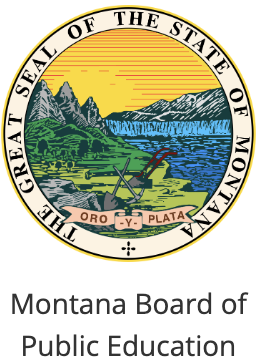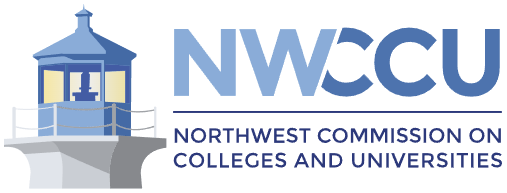Policy - Practicum
Coordination of Schools and University
Policies and Procedures are collaboratively developed and regularly reviewed by the university faculty and representatives of local school districts.
- All placements are coordinated by the MSU Field Placement and Licensure Office (FPLO) in cooperation with the school district administrators where placements are being sought.
- School administrators are made aware of the MSU FPLO policies. All prospective pre-service teachers (PSTs) are provided with equitable treatment by the FPLO and P-12 partners.
- Cooperating teachers (CTs) and university field supervisors (FSs) have considerable teaching experience, are prepared to supervise pre-service teachers, and are well informed of university policies.
- The school administrator will ensure that a cooperating teacher is well qualified and willing to work with a pre-service teacher. Cooperating teachers must have a minimum of two years teaching experience to mentor practicum and internship students and three years of teaching experience to mentor student teacher candidates, both with a similar grade level and subject area as that of the TC.
- Placements are arranged as much as possible, to ensure students gain a variety of classroom experiences.
- Students are placed where they will receive an unbiased assessment and will not be placed in a school district where they have friends or relatives in professional positions - or, in the case of secondary/K-12 candidates, in high schools from which they graduated within the previous five years. This helps ensure an equitable experience for all candidates.
- Because MSU FPLO facilitates rather than creates placements, clinical assignments
cannot be guaranteed. MOUs are in place that determine placement protocols. Local
agreements require that placement offerings go through administrators who disseminate
this information to teachers meeting both placement of school and MSU qualifications.
These teachers, in turn, review materials prepared by pre-service teachers and select
candidates they consider appropriate matches for their classrooms. Thus, many factors
go into the placement process over which MSU has little or no influence. Additionally, MSU
faculty, when necessary, will coordinate placement requests through the FPLO office.
The best chances of obtaining a first-choice placement are gained by:
- Creating a high-quality reputation for professionalism during each level of clinical experience and accompanying coursework.
- Preparing professional, high-quality materials for review by prospective cooperating teachers and administrators.
- Internships comprise 80 hours under an appropriately licensed educator.
- EDU 498 Reading Internship and EDSP 498 Special Education Internship students can be placed in either a traditional 14-week student teaching placement (blended day), or a 9/5 student teaching split: 9 weeks in primary placement, followed by 5 weeks in the internship placement or a standalone placement prior to student teaching for 80 hours.
- Exceptions to the above-stated policies include either (1) a variance request or (2) an accommodation made through the MSU Office of Disabilities.
Stating your Preferences
- PSTs are given an opportunity to request placements in a geographic region or within a specific school district. However, a student must be prepared to accept any placement coordinated by the MSU FPLO.
- PSTs are also given an opportunity to request placement at a preferred grade level. The FPLO attempts to place each candidate in the requested grade level. However, a PST may be assigned to any grade level appropriate to the candidate's licensure parameters. MSU FPLO does not have control over the final placement. P-12 administrators may adjust FPLO requests to reflect the priorities and resources in their schools.
- If a student teacher does not accept MSU FPLO's first placement, another placement the same semester cannot be guaranteed. Candidates who decline placements jeopardize timely completion of course-work and risk being put on hold for one or more semesters.
Placements – Geographic areas
- The terms "in-area" or ‘Bozeman Area’ include all the school districts within driving distance of the MSU campus, from Livingston to Willow Creek.
- MSU FPLO does not accept requests for only Bozeman or Belgrade placements. Each TEP student should be prepared to spend at least one semester in a teaching placement outside the immediate Bozeman area.
- MSU FPLO cannot guarantee a placement within walking or biking distance from a PST’s home or apartment. Candidates must be prepared to either drive or find a ride with someone else.
- PSTs must not negotiate their own placements with a teacher or a school administrator. This also applies to friends and relatives seeking placements on TC's behalf. Placements arranged in violation of this policy are subject to cancellation.
Communication:
All potential problems/concerns should be shared by PSTs, FSs, and CTs with the instructor of record early. After consulting with the course instructor, all questions related to placements and licensure should be directed toward field placement personnel.
Professionalism:
Pre-service practicum teachers must maintain the highest standards of professionalism in both placement and university contexts, including meeting responsibilities on time and communicating proactively and professionally with CTs, the instructor of record, and field supervisor.
All the following should be conscientiously observed:
- MSU’s Professional Expectations and Competencies,
- Professional Educators of Montana Code of Ethics
- Professional, appropriate relationships with students, including avoidance of non-academic or any personal/online contact
Responsibility:
Complete, timely, and competent fulfillment of each practicum requirement moves the pre-service practicum student ahead to subsequent responsibilities and is the only path to ensuring the candidate will be granted entrance into EDU 495 “Student Teaching.”
Assessment:
Practicum Grades are determined according to instructor syllabi. CT performance evaluations will be considered by each instructor prior to determining the PST practicum grade. To demonstrate professional readiness for teaching, all pre-service practicum students must pass, with a “C” or better (73%), each of required elements to be considered and move forward into EDU 495 “Student Teaching.”
Students must maintain minimum 3.0 GPA through their student teaching semester.
Absences:
Absences from placement classrooms and practicum course sessions are only excused for illness or serious emergencies. Please refer to the Departmental Attendance Policy and Course Syllabus for exact requirements.
- Report all emergency/illness absences to the school, CT, FS, and EDP instructor of record.
- Tardies are considered absences and must likewise be reported.
- No non-emergency/illness absences are permitted during practicum, except as excused in advance by both the CT and instructor of record. Days must be made up.
Dismissal
If a Pre-Service Teacher is asked to leave a school district for any reason, the placement will be suspended pending an investigation conducted by the practicum instructor, the director of the teacher education program, and the director of field placement.
Planning:
The Practicum Bobcat Lesson Plan (provided by the practicum instructor) is required for all formal observations prior to midterm and all five of the REP lesson plans.
- PSTs must provide lesson plans for all lessons taught in the classroom to the CT 48 hours in advance.
- All formally observed lessons need to be provided to the field supervisor or REP observer 24 hours in advance.
- Lessons not formally observed should follow CT-directed planning methods, and all plans should be provided to the CT 48 hours in advance of any class taught by the PST. Co-teaching: MSU encourages both CTs and PSTs to engage in a co-teaching model
Reporting:
PSTs who witness signs of K-12 student abuse or neglect must report these observations to
- PST reports to the teacher/administrator
- PST reports to the director of field placement
- Director of field placement follows up with the school administrator to ensure the matter has been reported and documents that the matter was reported to the school



